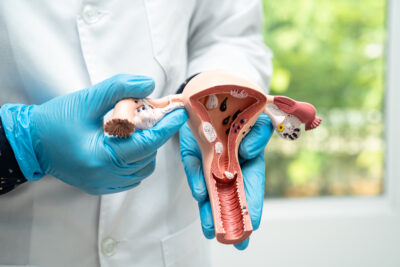Set out to determine the characteristic size range of airborne SARS-CoV-2 RNA – what size aerosols would the virus stick to – researchers at the Centre for Energy Research, Hungary, Semmelweis University and Wigner Research Centre for Physics have managed to identify the virus on a much wider range of aerosol particle diameters (70 nm–10 µm) than ever before, including the sub-500-nm size range.
The study comes as a continuation of previous works by Semmelweis University and the Centre for Energy Research, which looked at where within the lung coronavirus depositions would be the most likely werethey carried by aerosols small enough to enter the lungs and possibly the bloodstream. The tests were carried out in a hospital ward and a non-invasive respiratory therapy unit.
The results revealed that SARS-CoV-2 RNA is most likely to exist in particles with 0.5–4 µm aerodynamic diameter, but also in ultrafine particles. The particle size distribution associated with the virus is important as the smaller the particle, the easier it is for the virus to enter the body. “The PM2.5 (particles of 2.5 µm and below) range – aerosols small enough to enter deep in the lungs and even the bloodstream – is a particular cause of concern” – says Veronika Müller, head of the Department of Pulmonology at Semmelweis University.
 Alveolar deposition increases with decreasing particle diameter. Significant quantities of SARS-CoV-2 RNA were detected even in the sub-300-nm size range, which suggests that the enveloped virus might even be able to spread in the air without being attached to a carrier aerosol particle.
Alveolar deposition increases with decreasing particle diameter. Significant quantities of SARS-CoV-2 RNA were detected even in the sub-300-nm size range, which suggests that the enveloped virus might even be able to spread in the air without being attached to a carrier aerosol particle.
The findings suggest that particle resuspension from surrounding surfaces is an important source ofSARS-CoV-2 RNA present in the air of hospital rooms and other indoor spaces. Similar to sediment in water, airborne particles deposited on any surface will be stirred up by movement. When someone walks through a ward, stirs up the air and breathes it in, the pathogens attached to small, invisible particles can enter their lungs and any other people’s body in the room.
From a respiratory infection viewpoint, it is not only the surfaces that are problematic but also the air we breathe in
– says Müller.
With that in view, cleaning in general is key not only to preventing infection through contact but also to reducing the airborne spread of infectious particles. „So far, the importance of surface and hand disinfection has been emphasized, which is indisputable, but the possibility of infection with aerosols is just as important” – Müller explains. The research may also contribute to reducing hospital infections, such as hospital-acquired pneumonia (HAP), and more awareness around proper mask wearing.
The findings are likely valid for a number of other respiratory pathogens, including flu and respiratory syncytial virus (RSV).
The real value of this research is that we were able to use SARS-CoV-2 as a prototype to describe the transmission of other pathogens
– says Müller.
“Under non-pandemic condition, we barely have the chance to do that as patients with different respiratory diseases are not separated, the pathogens and the methods may vary”
The results may serve as guidelines to control infection and manage potential epidemics more effectively. They may also provide inputs when designing hospital wards or planning the accommodation and treatment of infected patients, or home and nursing care of patients. “Our aim is to help hospitals and doctors fight airborne diseases more effectively and pay even more attention for aerosols in high-risk areas such as an intensive care unit.”
Photo: Semmelweis University – Attila Kovács; Cover photo (illustration): iStock by Getty Images – gorodenkoff


